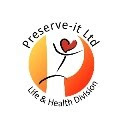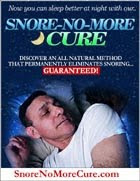USA versus European Cosmetic Safety Comparison
The two largest markets for cosmetics and personal care products are the USA and the European Union (EU).
And while there are similarities, safety regulations differ greatly between the two.
Cosmetics manufactured under the EU Directive are held to higher standards than those from the US, which are loosely regulated by the Food and Drug Administration (FDA). Discrepancies are most apparent in the areas of ingredient safety, testing guidelines and labeling.
Though it is commonly assumed that FDA regulates cosmetics the same as it does food and drugs, "FDA's legal authority over cosmetics is different from other products regulated by the agency .... Cosmetic products and ingredients are not subject to FDA premarket approval authority, with the exception of color additives." – taken from the FDA website.
Harmful Ingredients Banned or Restricted for Use in Europe
Formaldehyde
Diethanolamine (DEA)
1,4-dioxane
Dibutyl phthalate
Sodium methylparaben
Ingredients are probably the first thing a conscientious consumer looks at in a cosmetic product. In the US ingredient safety is assessed by the Cosmetics Ingredients Review, a committee established and funded by the Personal Care Products Council (PCPC). So far CIR has reviewed only 11 percent of cosmetic ingredients and FDA has banned or restricted the use of only 11 chemicals.
That leaves 89 percent of all ingredients used in cosmetics in the US that have not been evaluated for safety by any publicly accountable institution.
EU regulations require ingredient testing and safety guidelines go through SCCS, a scientific advisory committee appointed by the EU Commission.
In 2003 revisions were made to the EU Cosmetics Directive banning 1100 of the 15,000 tested from cosmetic use.
This means that cosmetics and personal care products containing chemicals known or suspected of causing cancer, genetic mutation, reproductive harm or birth defects are not allowed to be sold in the European Union.
Canadian law governing cosmetics safety is also more stringent than US regulations.
A Cosmetic Ingredient Hotlist was recently created by Canadian government where over 500 ingredients are either banned or restricted for use in cosmetic products sold in Canada.
While Canadian standards are not as strict as those of Europe, they are still ahead of the US.
As far as safety testing goes, responsibility lies with the manufacturer in both the US and EU. The difference is that the EU takes a precautionary approach, responding to potentially harmful ingredients, where the US assumes a wait-and-see attitude where a chemical must be “proven” harmful in order to impose regulatory action.
Now let’s talk labeling. EU requires full ingredient listings following International Nomenclature of Cosmetic Ingredients (INCI) guidelines.
INCI is a labeling system for skin care ingredients implemented by the EU, which requires full disclosure of ingredients on cosmetic and personal care products. Manufacturers using INCI labeling must follow ingredient name requirements and listing guidelines set by the regulatory board, namely by using the ingredient’s scientific name and listing ingredients by quantity of presence in the product – greatest to least.
Conversely, here in the US full ingredient listing is not required and ingredients go by many names, often making it difficult to determine whether or not a product harbors harmful ingredients. Marc Pritchard, chair of the Cosmetic, Toiletry, and Fragrance Association (now PCPC), stated in their 2005 annual report, "We are facing increased regulatory clout from the European Union which is affecting our industry on a global basis, notably in China. It is clear that our industry is at a crossroads in the areas of safety, self-regulation and global harmonization, and will require further action on our parts to lead to positive changes in the future that are good for consumers, and good for our industry. ...".
Making changes to FDA regulation of cosmetics would mean changing the law. In lieu of such safety guards, some states have set up protective measures on their own. For instance, Washington has banned phthalates from personal care products designed for children, and California is the first state requiring cosmetics manufacturers to disclose any ingredients on state or federal lists of chemicals that cause cancer or birth defects.
To this point, regulation of cosmetics has been severely overlooked in the US. For the time being, ensuring product safety is left to the consumer. To help protect yourself and your family read product labels and familiarize yourself with the different terms used for cosmetic ingredients. And follow brands committed to product safety and full ingredient disclosure. By protecting ourselves, and using our purchasing power, we can eventually change the face of cosmetic safety.
Visit our websites for further information.
http://www.preserveitltd.com/ or
www.avaandersonnontoxic.com/preserveit (distributor ID# is 2439).
skip to main |
skip to sidebar
Preserve-it (your life, your health, your home, your planet) here you will find lifesaving tips, Eco tips & hints, non-toxic skincare and cosmetics, eco consulting services. "Treat the earth well. It was not given to you by your parents. It was loaned to you by your children" __ Kenyan Proverb
Welcome
Steve & Tracy
Hi we are the owners of Preserve-it Ltd. Our company is based in Ohio. We offer products, services and programs which we carefully select and which have to "make a difference" - a difference in your life, health and/or the environment along with helping you save $$. We are parents to 5 beautiful teen/tweens and our mission is to help others realize the importance of preserving your "today" so you can enjoy living many tomorrows. Please visit our website at http://www.preserveitltd.com/ for further information about our products, services & programs.
Eco-Thoughts & Tips
Labels
- Eco-living (9)
- Savings (9)
- non toxic skincare (3)
- AED (2)
- CPR training (2)
- safe cosmetics (2)





